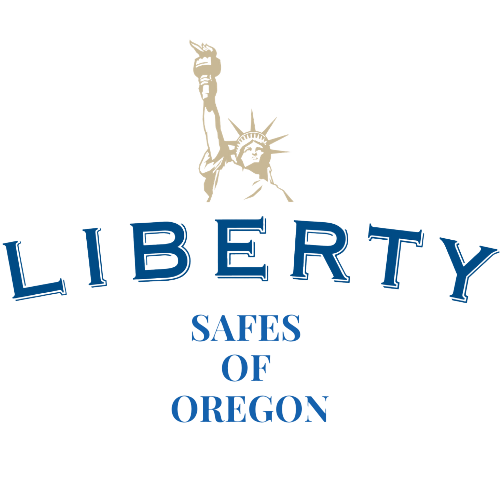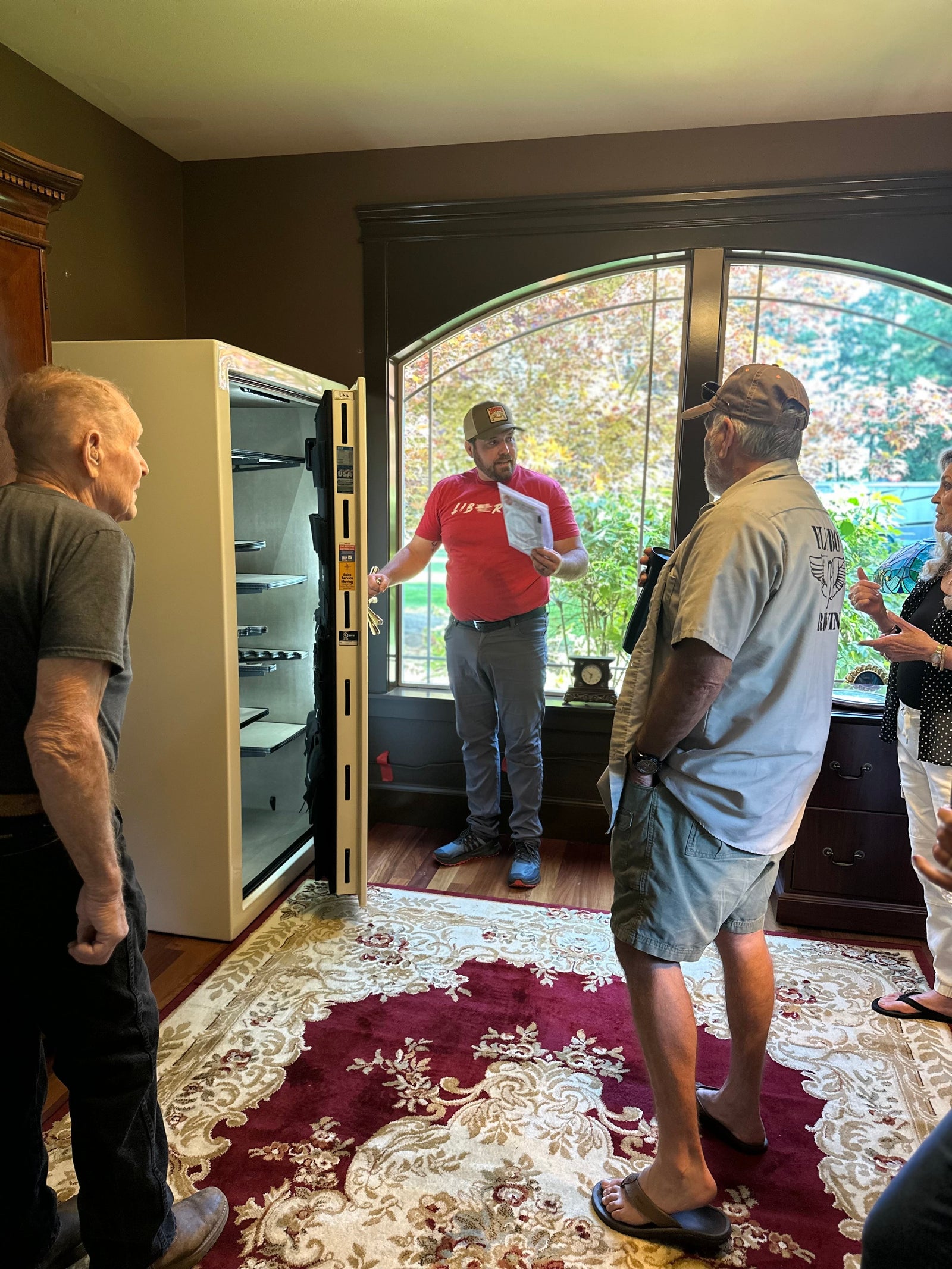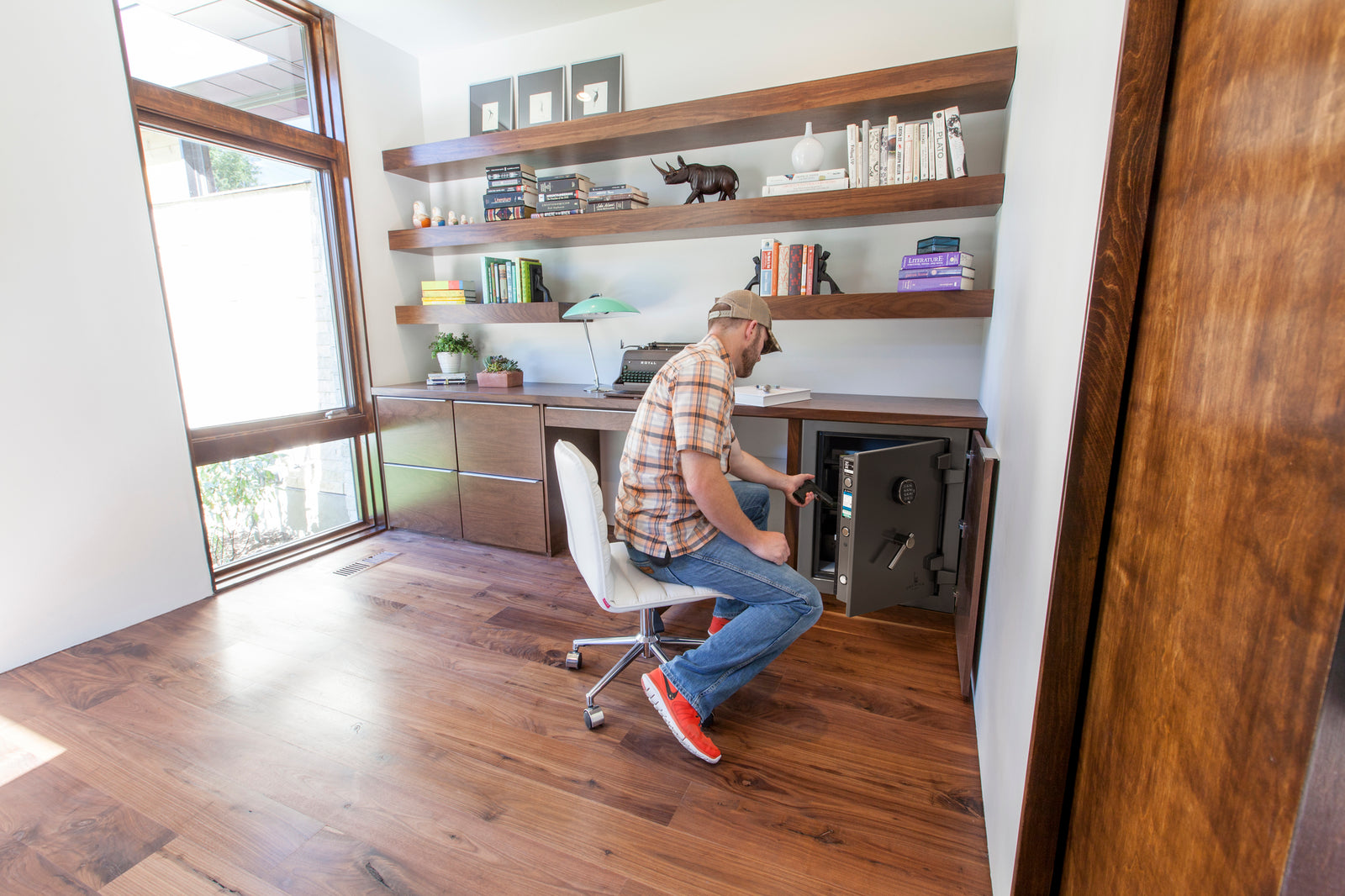When it comes to safe fire protection, there’s no room to fool around. Liberty Safe bases its fire testing on standards developed by the U.S. Department of Commerce National Institute of Standards and Technology (NIST). These standards were developed through a “full-scale house fire” experiment conducted through a partnership with federal agencies, including the ATF (Alcohol, Tobacco, Firearms) and U.S. Fire Administration plus private industries, including the National Fire Protection Association and American Re-Insurance.
Testing Focused on Real-Life Conditions
NIST’s full-scale house fire test was performed using a two-story, single-family home constructed with a wood frame. Walls and ceilings were built from gypsum wallboard. The home had four bedrooms, two baths, basement and attached garage. Hardwood flooring was installed throughout the home, except for vinyl flooring in areas where you would normally expect, like the kitchen and bathrooms.
Two walls in the living were covered with laminated pine paneling. The home was furnished as many homes are often furnished. Along with a mixture of gasoline and two-cycle engine fuel for a liquid accelerant, the furnishings were chosen with the intent of fueling the fire that was set in the home’s living room.
NIST’s test was conducted under controlled conditions to mimic what exactly happens during a home fire. The initial fire was set by igniting an open book of matches in the living room couch.
This fire quickly spread to ignite the liquid accelerant that was poured in the room. Temperatures throughout the room were monitored by special thermocouples placed from floor to ceiling in the living room and adjacent dining room.
Don’t Be Fooled by Fire Ratings
While most fires in homes don’t begin by igniting two-cycle engine fuel, the full-scale house fire experiment provided some very important information. One of the facts uncovered is that within the first few minutes of a house fire, temperatures quickly soar to 1200 degrees.
So why is that information so important? Many safe manufacturers base their safe fire protection certification on fire tests that aren’t based on how fast temperatures actually heat up in a real fire. In fact, many slow the ramp up to 1200 degrees over 20 to 30 minutes. They do this to improve the length of time their safes survived in the furnace at “1200 degrees.”
Liberty Safe does not play this game. We ramp up the heat to 1200 degrees within ten minutes, which is very similar to NIST’s home fire test scenario for fire-rated safes. So, in a real fire, you can expect that the contents in your Liberty gun safe will have the best possible fighting chance of survival.
We have proof of how well our safes stand up to fire from real customers, too. Learn more about Liberty’s safe fire protection!


